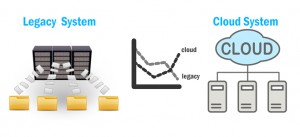We often get asked this question. Should we implement your time and attendance on our Server or should we let you host it? Our response is often the same. Let us first understand your environment, your specific needs and how you plan to use our time and attendance system. Once these have been established, we will then provide you with a solution that best suits your needs. Depending on your company each solution serves its purpose.
The right time and attendance software can help transform a business and operations. That’s why we think it’s important to take time to first understand your needs before offering a suggestion.
Our hosted time and attendance solution provides broad functionality, is priced affordably, and is delivered in a manner that minimizes complexity. The robust features of our on-premises time management solution mirrors our SaaS time and attendance.
Benefits of On-Premises and Hosted Time and Attendance:
On-Premises Time and Attendance Software
- Control over all systems/data
- Data is handled internally, by your company
- Control over the maintenance windows, issue resolution, security and when patches are applied, etc.
- All components of an on-premises time management solution is housed internally and is overseen by the customer
- The flexibility of an on-premise time and attendance system provides deeper customization capabilities
Time and Attendance hosted by Apex Time Solutions
- Low cost for services
- No need to worry about the technical support of the application, applying patches, etc.
- No need to have a dedicated IT infrastructure to maintain the software
- You don’t need to invest in expensive hardware
- Accelerated deployment – in most cases, access can be granted almost immediately once the contract is finalized
Whether you opt for an on-premises or hosted solution, the ATS time and attendance software enables you to reduce labour costs and manage your labour resources more effectively. With ATS workforce management software you could reduce labour costs by streamlining your payroll process and optimizing your workforce, allowing your organization to save on labour costs.
The ATS time and attendance solution enables you to reduce labour costs and manage your labour resources more effectively. By automating routine business processes, eliminating administrative tasks, and monitoring labour activities as they happen, you can make better business decisions that save your company money.
The bottom line… hosted time and attendance is gaining in popularity. However, many companies still prefer to purchase an on-premise time management solution. Download a copy of our white paper on “On-Premises or Hosted Time and Attendance” here or go to our website to learn more.







